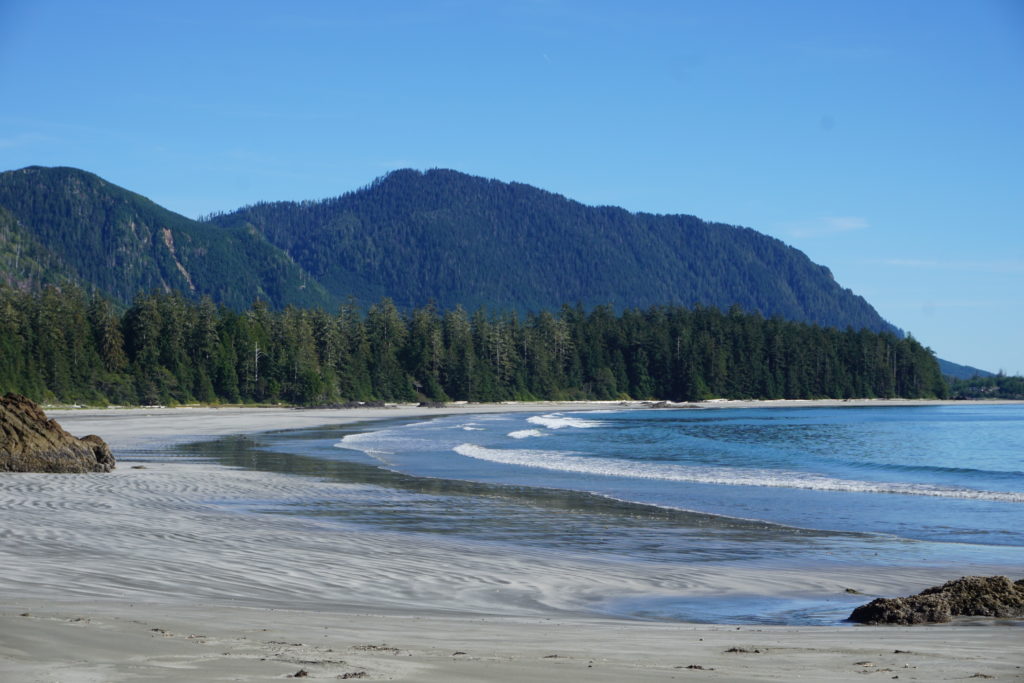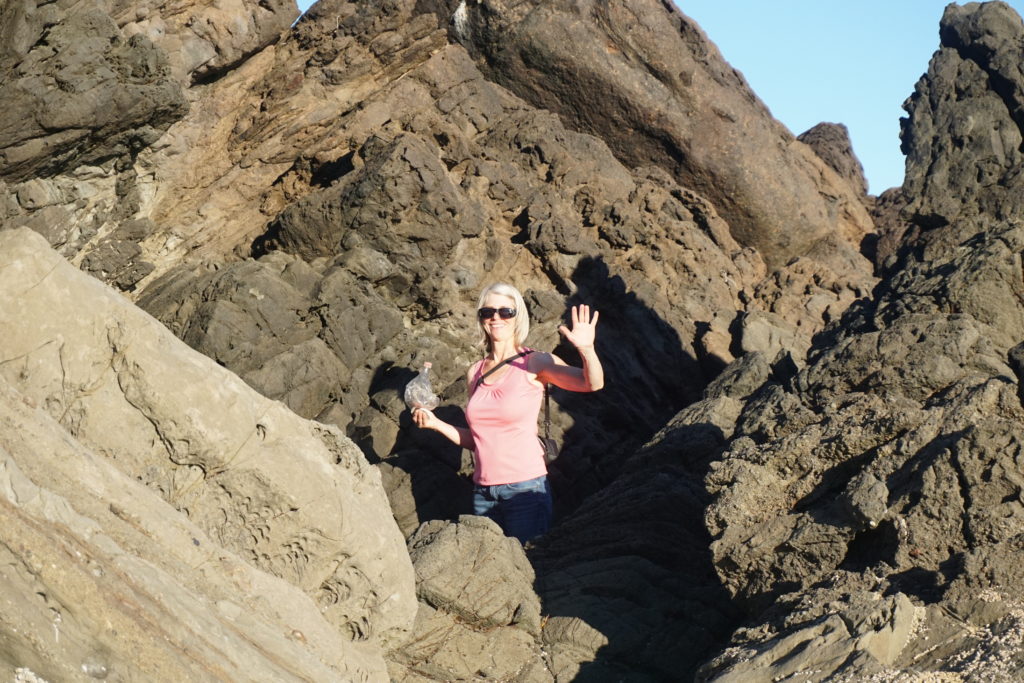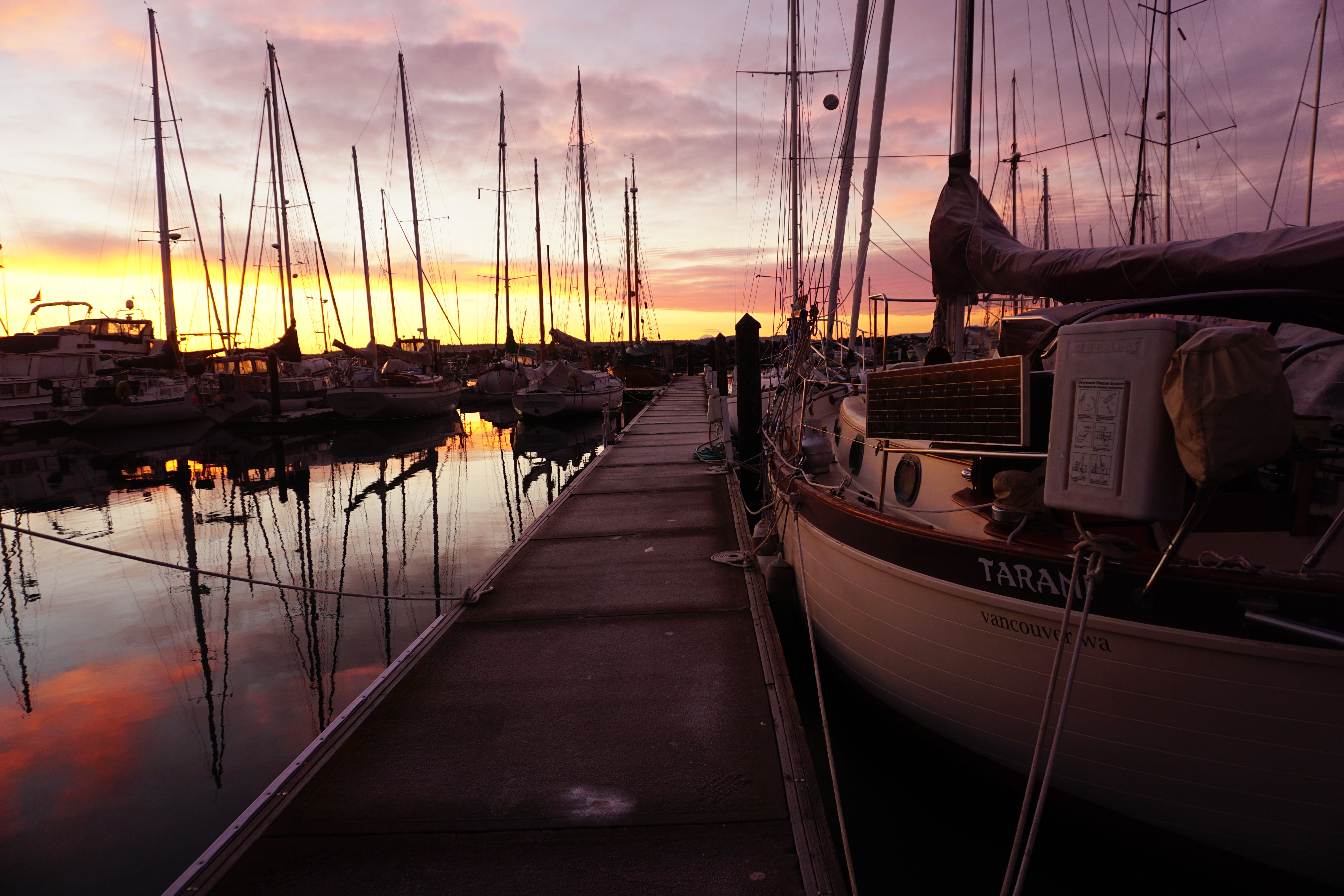We paid the monthly charge of $119 to stay at the Coal Harbour marina run by the Quatsino First Nations folks. Nice place. Quiet, clean washrooms and showers, laundry, and reliable bus service into Port Hardy. $119, including power. When you think about that, its a hell of a good deal. We parked the boat here for 10 days so I could make a trip back east to visit family and attend a funeral. Karen worked hard while I was gone on minor maintenance.On returning to the west coast it was sunny September weather but I detected a whiff of autumn and began to faintly hear that old Zeppelin tune, feels like its time to Ramble On.
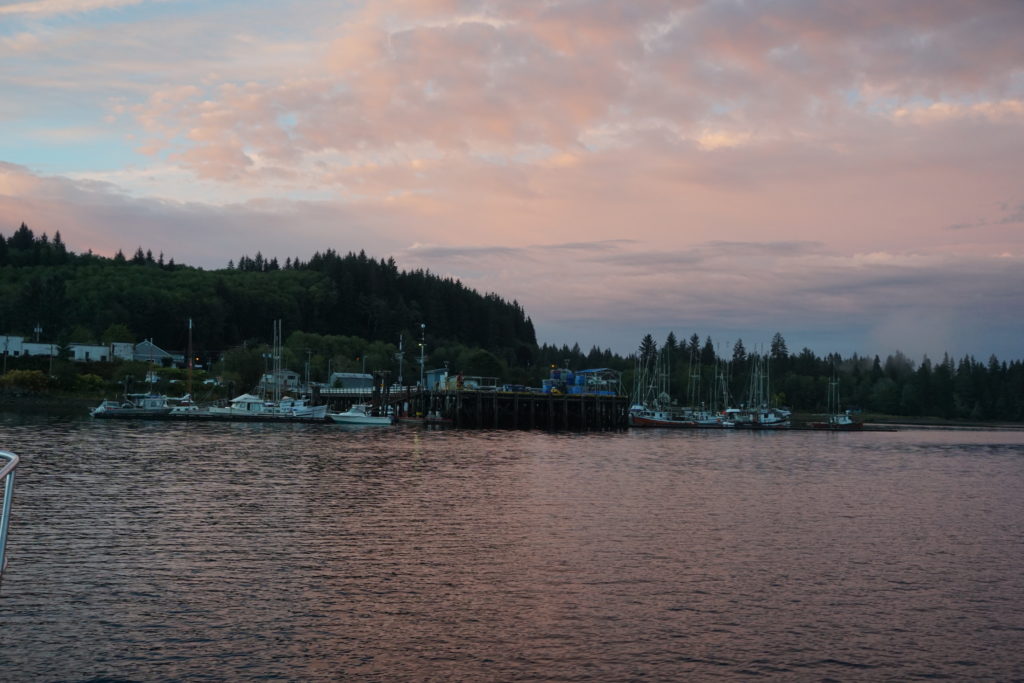
The night before we planned to go south around Brooks peninsula found us pre-rigging the sail with a double reef. The forecast included northwest winds of up to 20-30 knots. I expected and hoped we would be able to shake out one or both reefs after we got on our course but Cape Cook on the Brooks peninsula along with Solander Island standing just off the coast deserve respect. We would be trying to stay about 5 miles offshore and we wanted to be ready. Once our work was done the sun was setting gloriously. We relaxed with a cold beer and cooked up a nice little piece of ling cod that a fisherman had given us in exchange for a spare lightbulb we’d given him. It felt great to be at anchor in a quiet cove away from megalopolis.
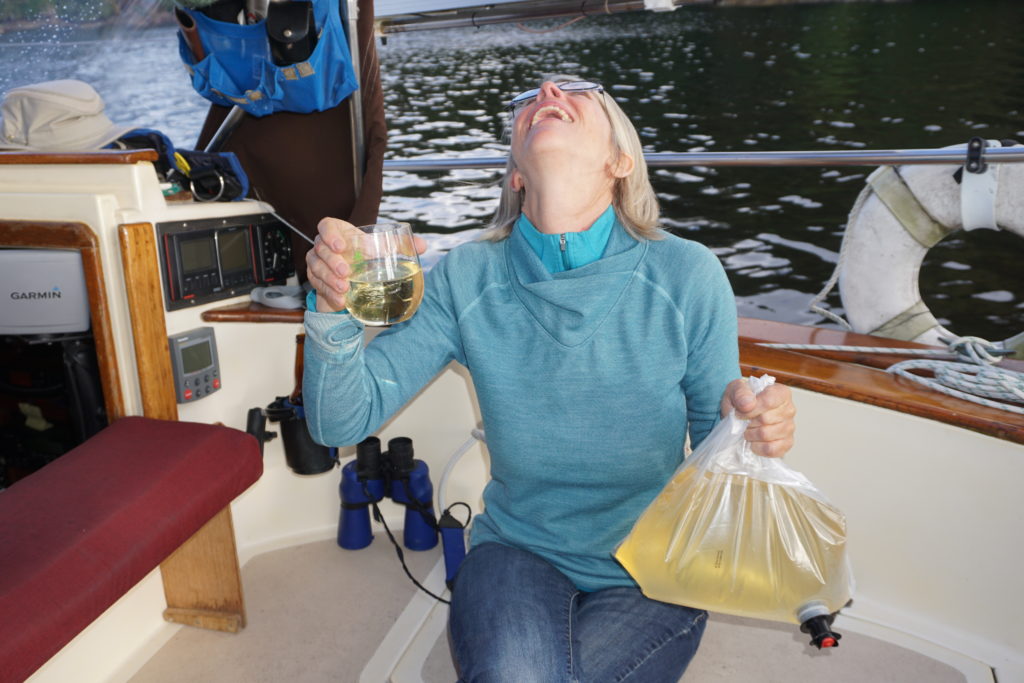
Next day dawned dark, that is we left before dawn. Sun was rising as we went out from Quatsino Sound. about an hour later. Swells were of decent size on this trip, 2-3 meters. Wind turned out to be just about perfect for us, about 15-20 knots going our way. After 4 hours or so, we were abeam Solander Island we altered course and went into the Bunsby Isands.
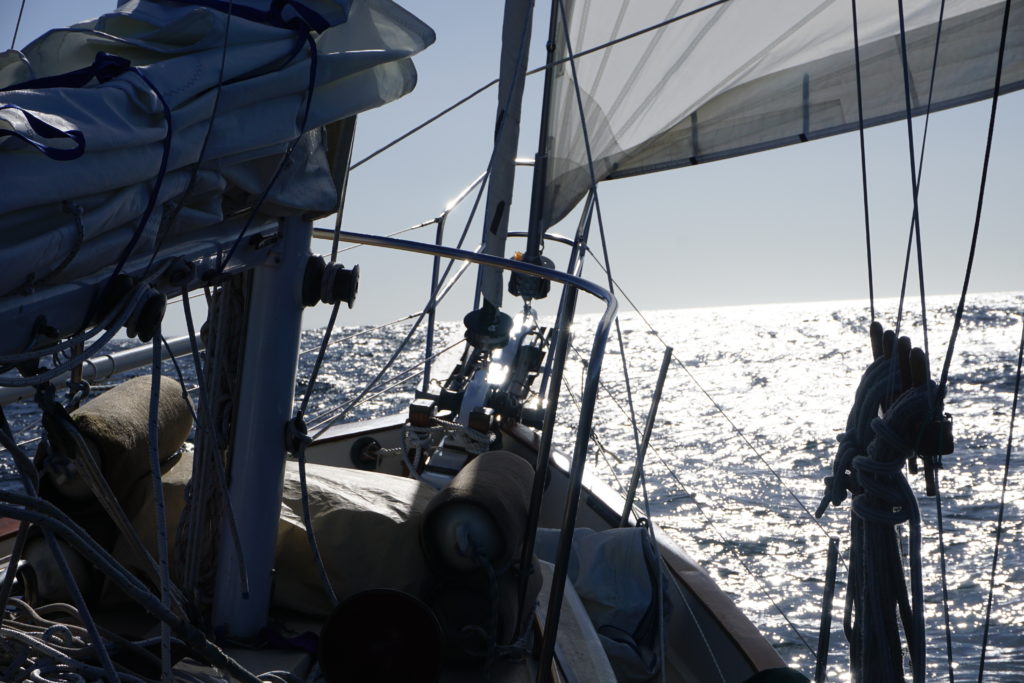
The Bunsbys are the site where sea otters were reintroduced to the environment back in 1969. They had been nearly hunted to extinction over a short period in the late 1700’s to the early 1800’s., basically eradicated from California to Alaska. It was typical short-sighted human behavior, a lust for their pelt and greed for money. Between 1969 and 1972 some 89 sea otters were released here and by 2008 their population had grown to an estimated 5,000. Another survey underway now is expected to show much greater numbers. In Alaska some 450 animals were reintroduced and by 2012 the population had grown to an estimated 25,000. Our anecdotal experience just over the past few years is that sea otters are more ubiquitous. We have noticed a curious difference between Alaskan animals and those of Vancouver Island;. Although all the otters in Alaska, B.C. and Washington are of the Northern species the Alaskan otters seem to be much shier around people. The Vancouver Island animals don’t dive until our boat is much closer. To be clear we don’t try to approach them but they are often floating nearby as we follow our course. At anchor on the west coast you will sometimes here a “clack-clack-clack” next to your boat and find another busy cracking his clam against a rock on his belly.
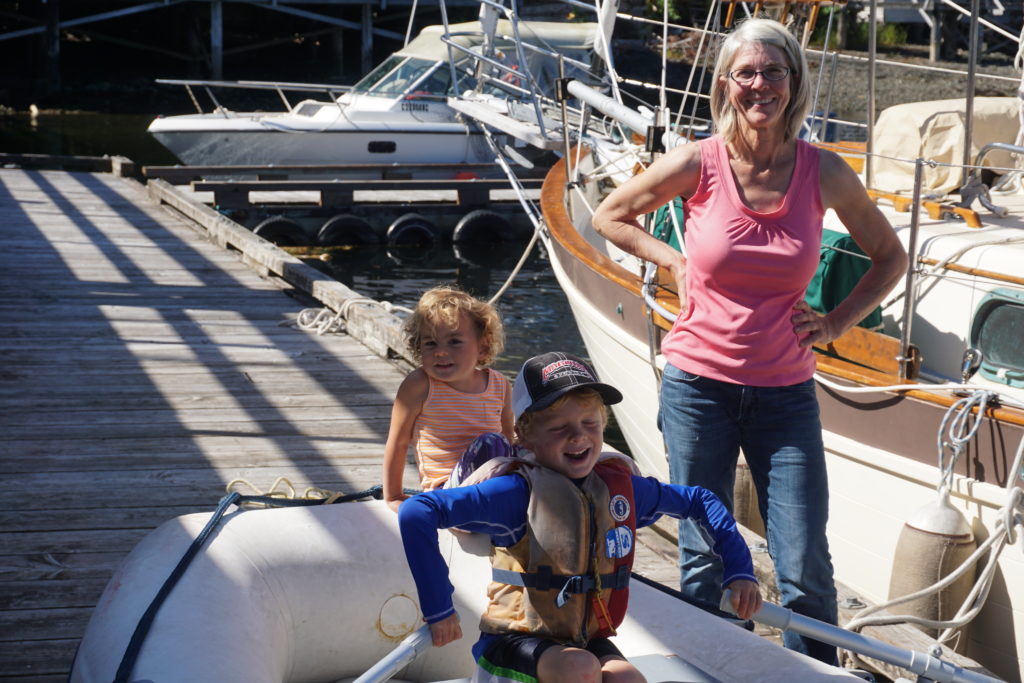
The recovery of the sea otters is not without controversy. They exist in ecological balance with sea urchins and kelp. They eat crabs and shellfish and so find themselves in competition with humans. The Nuu Chah Nulth and other coastal First Nations groups are however supportive of the effort and would like to regain the balance within which their peoples thrived for millennia prior to contact with “civilized” white man. There is concern that some fisherman may already be taking matters into their own hands, killing animals. It seems mankind has not yet learned to live in balance with the ecosystem. We seem to be especially hard-headed and ignorant. We have such a hard time learning that we are inseparable from nature. We forget the lessons of history at our own peril. For further info in sea otters here’s a general reference and an article on the recovery:
http://www.defenders.org/sea-otter/basic-facts
http://www.theglobeandmail.com/news/british-columbia/the-remarkable-comeback-of-sea-otters-to-the-bc-coast/article19681665/
